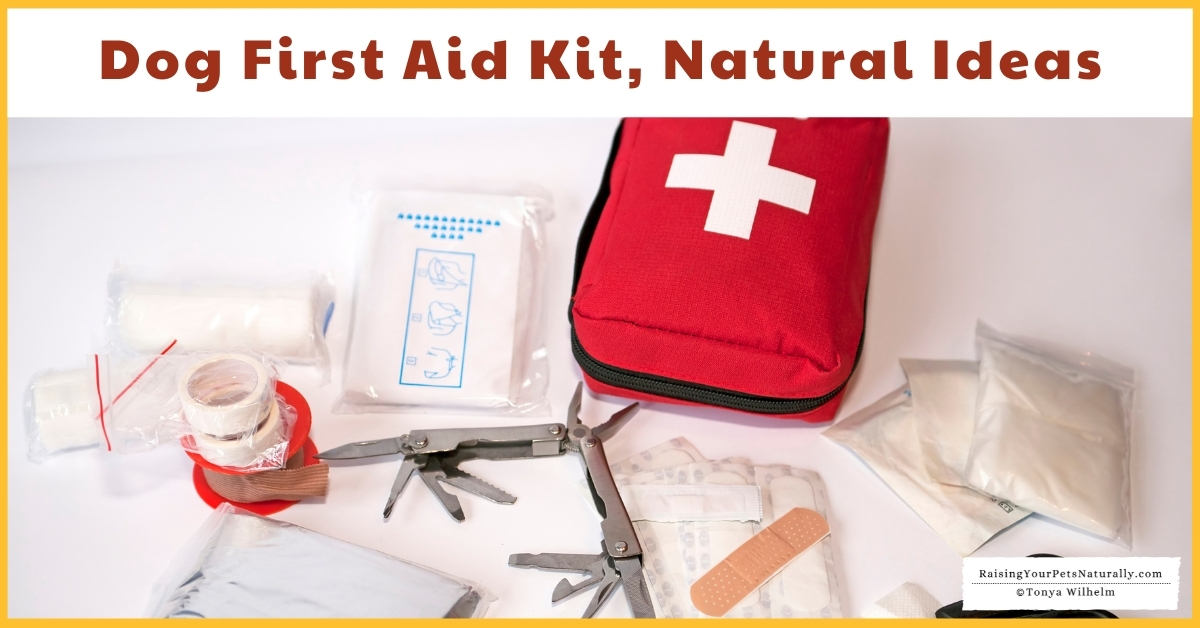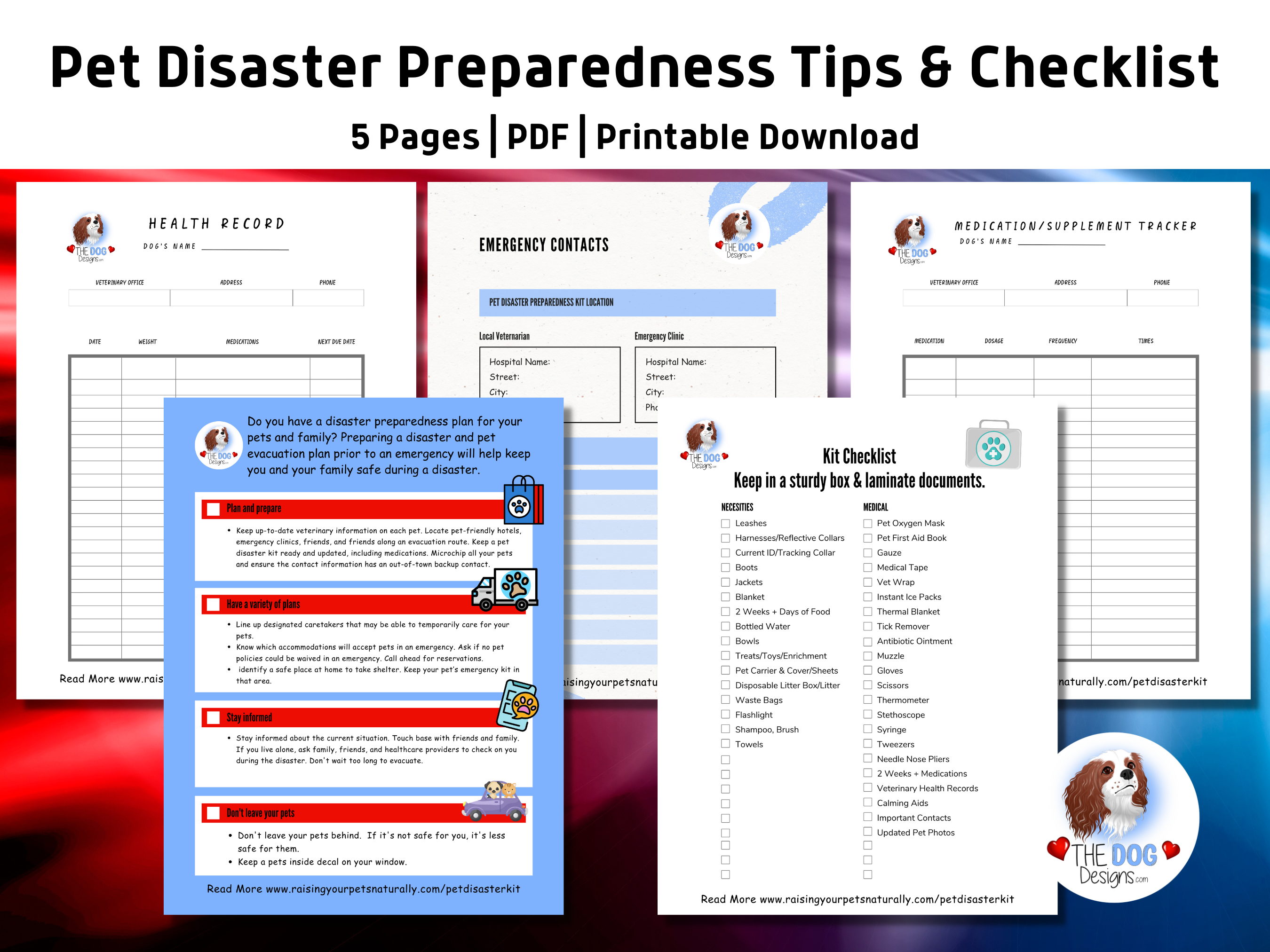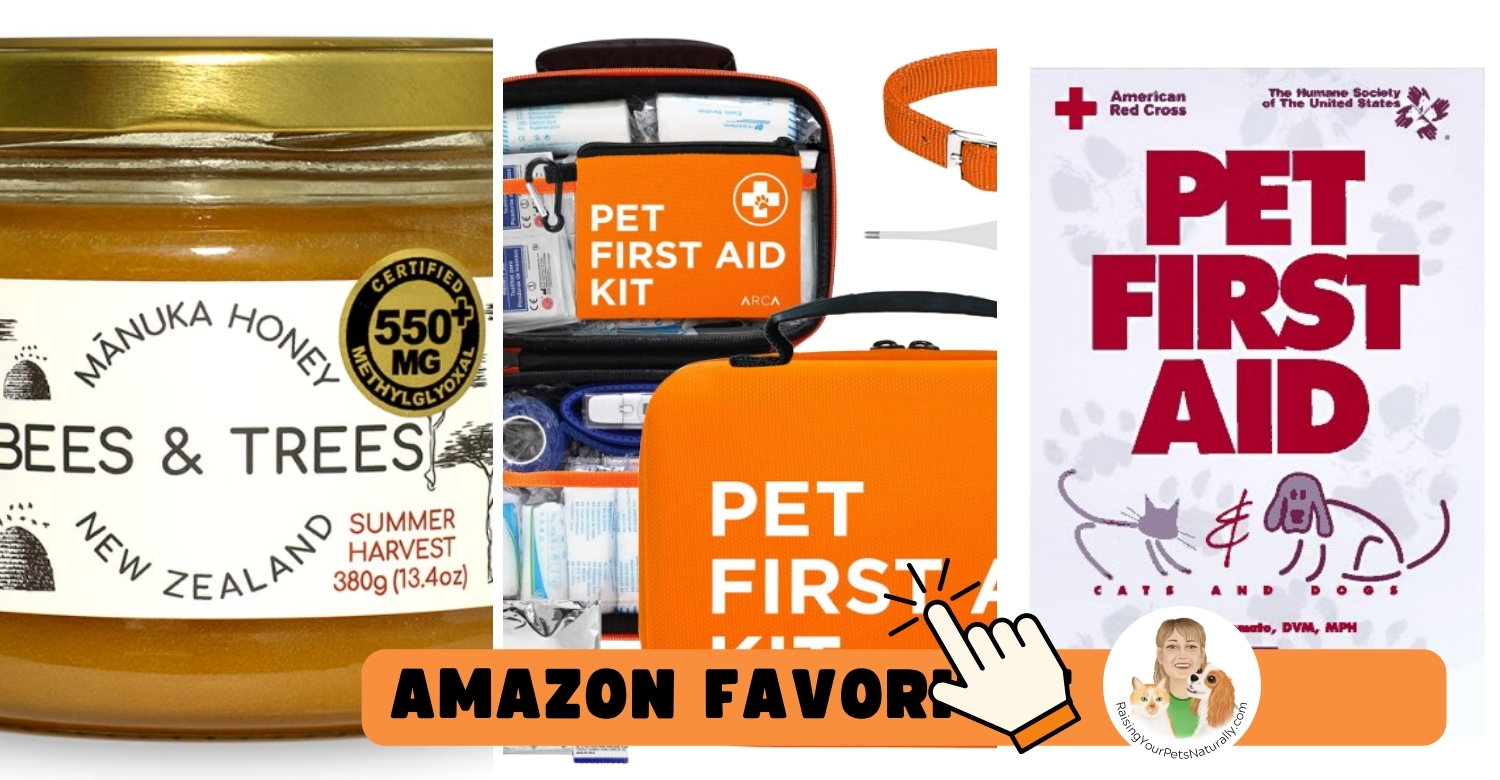Natural Dog First Aid Kit Ideas

Dexter isn’t short on medical supplies and items for a dog emergency. But those items are all at home and in his personal dog first aid station. Yes, he has an entire canine first aid station.
Over my career in the dog world, one of my “jobs” was teaching the American Red Cross Dog First Aid Course. During that time, my once small K9 first aid supplies grew and grew! Ha ha ha, I now have so many items, I’m not sure what I should pack when traveling with Dexter or what would make a good dog first aid kit for hiking. I thought this would be a good time to dig around in Dexter’s supplies and ask a few veterinarian professionals what their favorite natural dog emergency remedies included.
Manuka Honey
I’m personally still in the learning process of understanding how to evaluate a high-quality Manuka honey. What I’ve learned so far is that in order for the honey to be truly beneficial for health purposes, the MG content should be over 85, ideally over 500. It can range from about 85 to over 1000. What is all that? I’m still learning.
Lisa Davila BS-Biomedical Science Hospital Manager at Aggieland Animal Health Center in College Station Texas, recommends, “Medicinal Manuka honey is great for small wounds and abrasions to help promote healing and prevent infection.” Michelle Burch DVM, from Safe Hounds Pet Insurance adds, “Manuka honey also has benefits in easing stomach aches, improving digestion, and boosting the immune system.” Amber LaRock, a licensed vet tech and veterinary consultant at CatPet.club states that Manuka honey can be used for healing burns.
Aloe Vera
Dr. Burch explains that “The inside jelly substance of the aloe plant leaf has shown to have pain-relieving properties.” He recommends using the gel for minor cuts or burns to relieve pain. He goes on to caution, “The gel is non-toxic to dogs, but the rest of the plant can cause gastrointestinal upset with vomiting and diarrhea.” Charli Burbidge, the co-founder of Petz, also suggests that “aloe gel can be used to cool down some burns or insect sting.”

Yunnan Baiyao
Lisa Davila suggests using, “Yunnan Baiyao for traumatic injuries where bleeding is occurring.” Yunnan Baiyao powder can be applied topically and can help slow blood loss and give you time to seek emergency care.” Dr. Burch offers these tips, “Yunnan Baiyao is a Chinese herbal medicine used in humans and pets used for anti-coagulation and helps stop bleeding. In emergencies, the herbal medicine can be given by mouth or mixed with water to create a plaster for wounds.”
Styptic Powder
Styptic powder is another option to help stop bleeding. You can use a pinch of styptic powder, bandage dressing, and pressure. Don’t use it if your dog’s wound is deep or on burns.
Colloidal Silver
Last month I wrote about the side-effects and cautions when using colloidal silver. Be sure to read that article. But, there are incidences where colloidal silver may be a good option. Dr. Burch states, “Colloidal silver has antibacterial and anti-viral properties but should not be used long term as it is a heavy metal and will accumulate in the kidneys with chronic use. In emergencies, I recommend using it for scrapes, minor wounds, and burns.”
Saline Solution
Lisa Davila recommends having a saline solution on hand. Saline solution is good for flushing eyes or wounds. Skip the hydrogen peroxide, as this can actually destroy healthy cells and slow down wound healing. Lisa goes on to say, “Puncture wounds, in particular, can be worsened with peroxide; we never use it for cleaning wounds. We routinely use a diluted chlorhexidine solution.”
Benadryl or Quercetin
Dr. Karen Becker advises that dog parents can use quercetin and Apis Mel or Benadryl if a dog is having a mild reaction to a bee sting. For serious reactions, seek immediate veterinarian assistance.

Homeopathic Aconite or Flower Essence CrisEase
Both homeopathic and flower essence remedies are non-toxic and gentle. I’m personally a big fan of both types of natural remedy options for dogs. Aconitum napellus and CrisEase are used for shock and stress.
Dog First Aid Kit Basics
Along with those suggestions, you would want to have the basics covered. One way would be to purchase the best dog first aid kit for your dog and area. Then, you can add to it or remove unneeded items.
A few items that you might want to consider in your dog’s first aid kit:
- Gauze
- Medical Tape
- Vet Wrap
- Instant Ice Packs
- Thermal Blanket
- Tick Remover
- Antibiotic Ointment
- Distilled Water
- Towels
- Muzzle
- Expired Credit Card (to scrape away stingers)
- Gloves
- Scissors
- Emergency Phone Numbers
- Flashlight
- Thermometer
- Stethoscope
- Syringe
- Tweezers
- Needle Nose Pliers (remove any large objects)
- Dog Boots or Socks (cover foot wounds)
- Tight Fitting Sweater or Coat (cover and compress chest wounds)
- Dog First Aid Book
As I mentioned earlier, Dexter has a very extensive medical supply station. There are loads of other helpful natural remedies, first aid care, etc. that are always good to have at home. I would highly suggest speaking with your dog’s holistic veterinarian on the best options and treatment doses for your dog if needed. It’s better to have all that information at your fingertips prior to an emergency. Your dog’s behavior, diet, and medications will play a role in which options are best suited.
One final thought. It’s never a bad idea to take a pet first aid course or even a refresher course.
Your questions or comments are welcome below.
Are you looking for even more ways to stay up to date with Raising Your Pets Naturally? Sign up for the newsletter for more tips and promotions. Don’t forget to be social and Like, Follow and Subscribe.
Facebook Twitter Pinterest Instagram YouTube
 |
 |

Google Adsense—>





